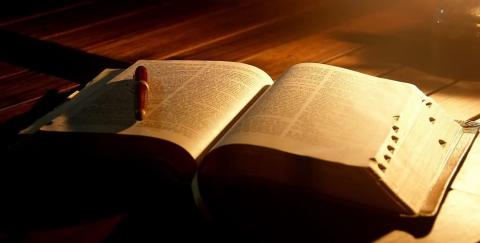The Day of Atonement - Part 1

February 26, 2022
And the LORD spoke to Moses, saying: “Also the tenth day of this seventh month shall be the Day of Atonement. It shall be a holy convocation for you; you shall afflict your souls, and offer an offering made by fire to the LORD. And you shall do no work on that same day, for it is the Day of Atonement, to make atonement for you before the LORD your God. For any person who is not afflicted in soul on that same day shall be cut off from his people. And any person who does any work on that same day, that person I will destroy from among his people. You shall do no manner of work; it shall be a statute forever throughout your generations in all your dwellings. It shall be to you a sabbath of solemn rest, and you shall afflict your souls; on the ninth day of the month at evening, from evening to evening, you shall celebrate your sabbath" (Leviticus 23:26-32).
The Day of Atonement was Israel's most holy day as it was solely concerned with atoning for the sin of the people. It is described in Leviticus 16 and Numbers 29:7-11. The solemnity of the day is emphasized by the notation that the Lord spoke to Moses after the death of the two sons of Aaron, when they offered profane fire before the LORD, and died (Leviticus 16:1). This was not a ceremony to be taken lightly.
The observance took place on the tenth day of the seventh month (Tishri) and is rich with symbolism. The High Priest would bathe and then put on white undergarments and a white tunic. He would not wear the ceremonial insignia of the high priest. He offered a bull for his sin and that of his house. He then took a censer with burning coals and incense into the Most Holy Place and sprinkled some blood from the bull on the Ark of the Covenant. He cast lots (throwing stones with markings or symbols into a closed-off space to determine the will of God) over two goats; one would be sacrificed and the other would became the ‘scapegoat’. He sacrificed the one goat for the sin of the people and sprinkled some of its blood on the Ark of the Covenant. He then came out of the sanctuary and cleansed the altar with the blood of the bull and the goat. He then put his hands on the head of the ‘scapegoat’, confessed the sins of the people over it, and appointed man to take the scapegoat out into the wilderness and release it. The man then washed his clothes and bathed before he could return to the camp. The High Priest would leave his white clothing in the tent of meeting, bathe again, and then put on his regular priestly apparel. The bull and goat that had been sacrificed were to be burned entirely.
The symbolism is rich in meaning. By bathing before entering the tent of meeting, the High Priest avoided bringing any form of contamination into it. By bathing at the end of the ceremony, he removed the holiness from himself before returning to the community. In wearing linen garments rather than his regular priestly insignia, he showed himself to be a penitent sinner who had stripped himself of all dignity and presumption of rank. The clearest statement of the high priest's personal sinfulness was his sacrifice of a bull for the sin of himself and his family.
The emphasis is on the worshiper being purified before standing before the Lord. Only Jesus Christ is able to purify us of all sin so that we may come before the Father holy and righteous. Amen.
Pastor
